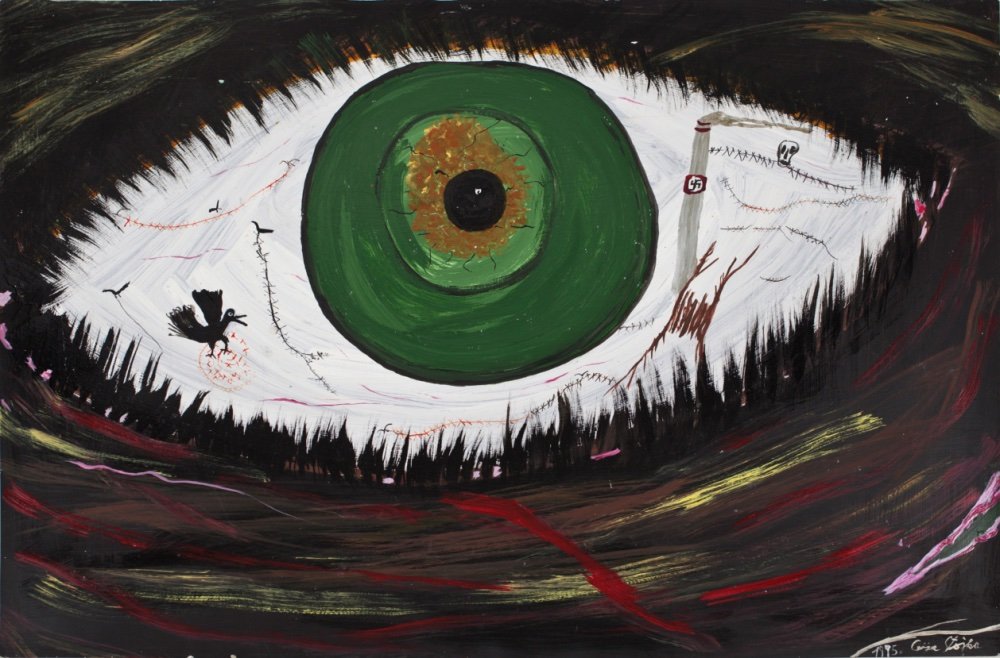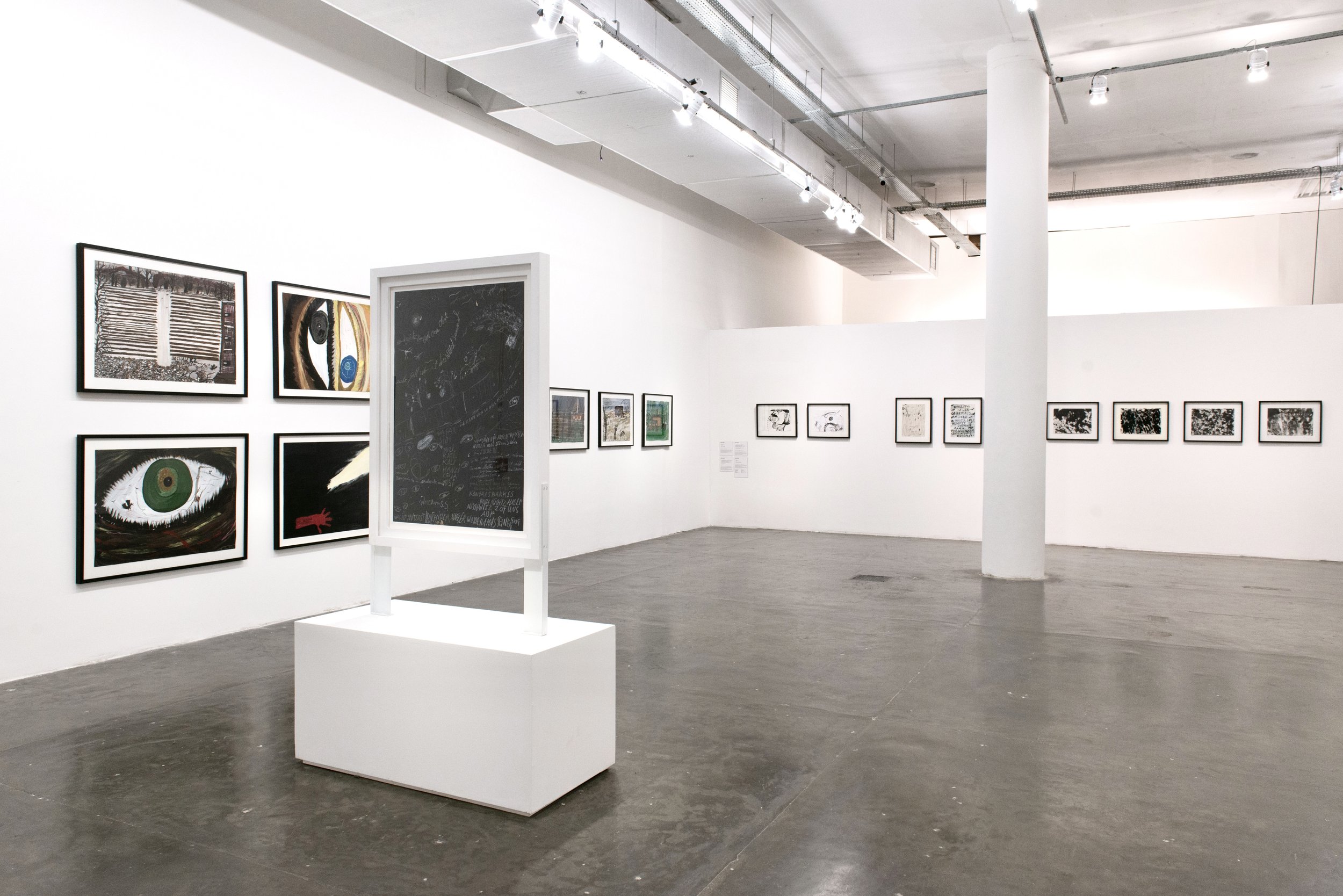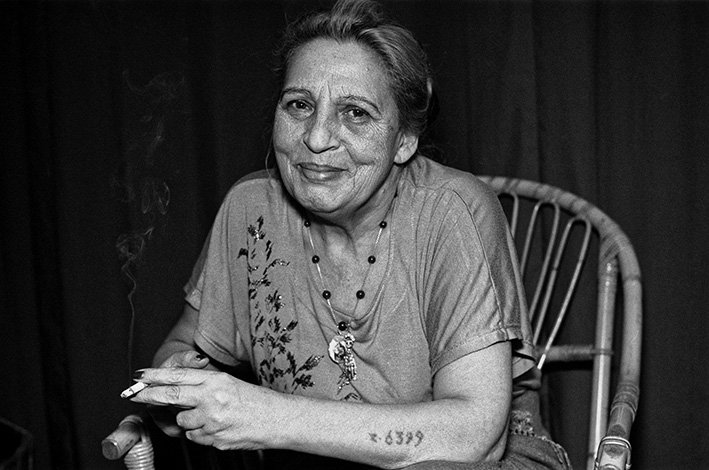Ceija Stojka
35th Bienal de São Paulo, Brazil
6 September – 10 December 2023
Titled Choreographies of the Impossible, the 35th Bienal de São Paulo considered the term “choreography” in a number of ways. On the one hand, it related to the literal act of movement needed to create art. On the other, it considered “movement” as the starting point of creation; what is it that moves the artist and leads them to create, the result of which in turn moves the viewer.
Ceija Stojka (born 1933 in Kraubath an der Mur, Austria) was an Austrian Romani writer, activist, musician and self-taught artist, and a survivor of internment in three different concentration camps during the Holocaust. Her 1988 memoir Wir Leben im Verborgenen (We Live In The Shadows) recounted the persecution of the Roma and Sinti populations by the National Socialists and shone a light on these marginalised communities. Around the same time, she began to process and articulate her memories through poems, paintings and drawings. The works recount the horror of the camps, happy moments spent with her family before the war, the experience of liberation and reassimilation to normal life. What each of the works have in common is an ability to root past experience in the present, almost like a dream.
Manuel Borja-Villel, former director of the Museo Nacional Centro de Arte Reina Sofía, Madrid, and a member of the curatorial team of the 35th Bienal de São Paulo, explained that gitanos (gypsies) have historically not only been excluded from institutional art spaces, but from societies as a whole. The opportunity to present a large number of Stojka's paintings and drawings to the Brazilian and international public was an attempt to make up for this historical ostracism and draw attention back to these communities. It is especially important in a time when exclusion, racism, and the rise of authoritarian governments once again threaten the world.







